A Visit to D’Osvaldo, Prosciutto di Cormòns in Friuli, Italy & a recipe for Prosciutto Purses (Fagottini di Prosciutto)
After three days, the hams are moved to the top level of the villa to begin the one year aging process. On cool and dry evenings, the windows are opened to circulate the air throughout the room. This location and the particular climate in Friuli is an important part of the aging process. Over the course of the year, the hams will again lose a portion of their weight.
Between 6 to 12 months, a mixture called sinai is placed on the hams. This combination of pig fat, rice flour (gluten-free), and spices protects the ham and prevents it from drying out. This is the last process the hams will undergo. The hams will lose approximately 30% of their weight in the total curing process with a final weight ranging between 8.5 to 13 kilograms (19 to 28 pounds).
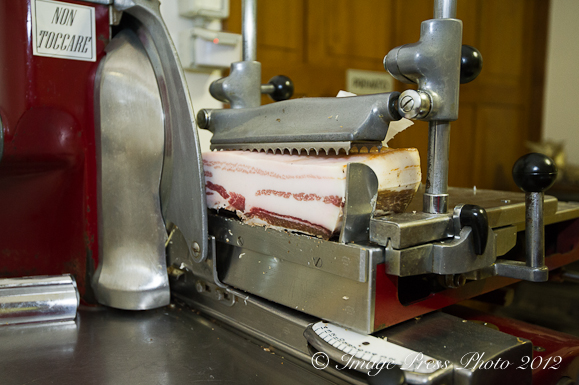
Slicing the speck for our tasting
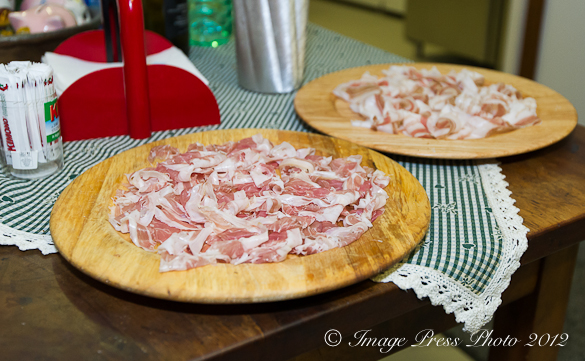
D’Osvaldo’s unique prosciutto and speck
To understand the taste of these prized hams, Wayne Young said it best. “Growing up in New Jersey, salami was Hormel. When I moved to Italy and went to Valter Scarbolo’s La Frasca (La Frasca is a restaurant where we dined one evening while in Friuli), where he makes his own cured meats, and he shared some with me, I said to Valter that ‘I saw God’s face. This is what salami is.’ Some guy who makes it in his garage with no machinery or chemicals knows how to make it best.” The artisans that take the time to create something very unique in small amounts is what makes these products extraordinary.
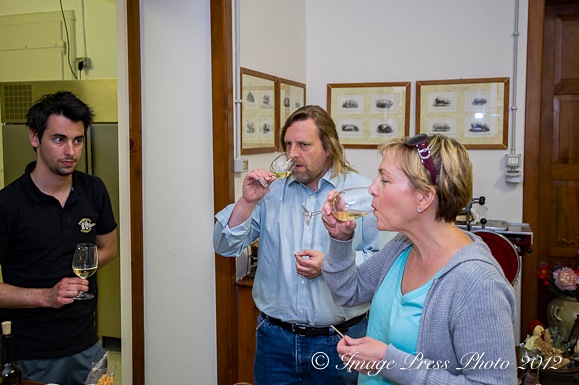
Enjoying the prosciutto with a glass of Friulano made at the villa with Andrew and Wayne Young
While still on sensory overload from the aroma of the charred woods and herbs and the smells of the sweet, cured hams hanging in the the aging rooms, we drank wine and tasted the prosciutto and speck. That rich, deep unctuous flavor of the prosciutto with its buttery smoothness was sweet and filled with a smoky subtlety that played on our palate. The speck was fatty and rich with a little pepper note. The cured meats were paired with Friulano made on property from their own grapes and tempered the saltiness of the ham and spice of the speck. I, too, had a religious experience.
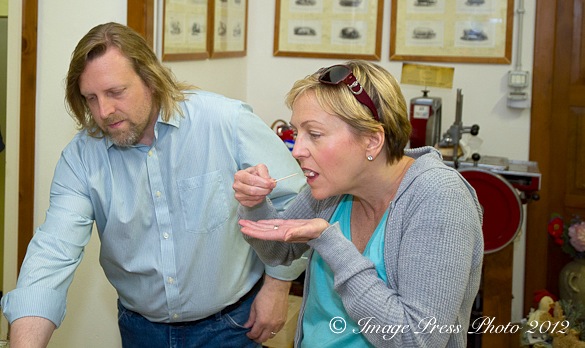
More memorable moments in Friuli
This wonderful tradition of a small artisan producer is under pressure from the European Community to force compliance in their curing process and ingredients. For about four years the D’Osvaldo family has been in a battle to keep their time honored tradition of smoking meats. The European Community does not recognize by law the specific methods that are required to make their hams and want them to either chemically smoke their meats or switch to smoking with sawdust and wood chips that are certified. Monica told us, “We hope the EC will recognize that some artisanal and natural methods have to be preserved with specific laws. But for now, there are no changes.” Somehow, I doubt the aromatics and resulting flavors could be preserved from sawdust and wood chips. The uniqueness of D’Osvaldo would be lost.
For every tradition that dies, another flame goes out, another sound goes silent. We need to help preserve these family traditions, small businesses, and artisan products. If we lose all of this, we lose our individuality and much of our heritage. We need to pass down traditions to the next generation so they can continue to create these products that are a part of our families, culture, and food heritage. You don’t know what you’ve gone till it’s gone.

I wish I could have taken some of these home with me
Thank you so much to Andrew and Monica for sharing their family’s history and the process of how they preserve their meats at D’Osvaldo. We enjoyed our time visiting with them and would have stayed longer tasting their incredible hams and drinking Friulano, however, we were on to our next stop in Friuli, Michele Moschioni, the winemaker.
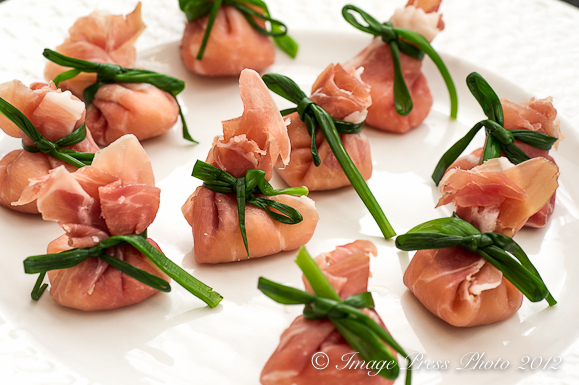
Prosciutto di Parma Purses (Fagottini di Prosciutto di Parma)
While I cannot buy D’Osvaldo prosciutto in the states, I was able to purchase Prosciutto di Parma from the Parma region in Italy for this recipe from Lidia Bastianich, Fagottini di Prosciutto di Parma or Prosciutto di Parma Purses.
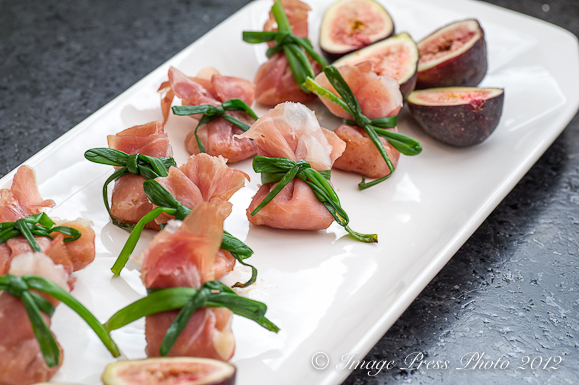
Serve with fresh figs for a simple and elegant appetizer
I loved the simplicity of this recipe which truly highlights the saltiness of the prosciutto along with the slight sweetness of the Grana Padano cheese. Of course, the pretty little package that envelopes these flavors, makes for a lovely presentation. Sautéed for just a few minutes in unsalted butter, this melts the cheese, and adds another layer of flavor. Serve them with either fresh figs or melon, as the recipe suggests.
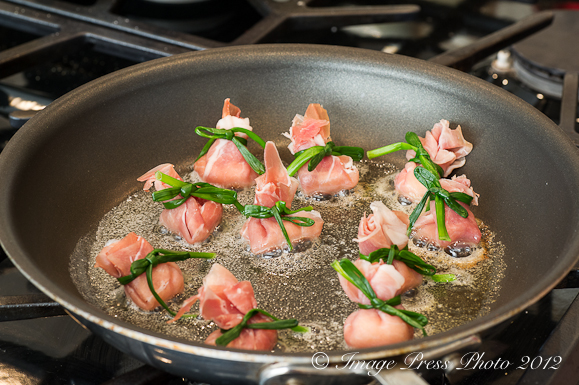
Sauté them in butter until slightly brown on the bottom
I will be preparing these often for guests as they were lovely to serve and perfect with a glass of white wine before dinner.
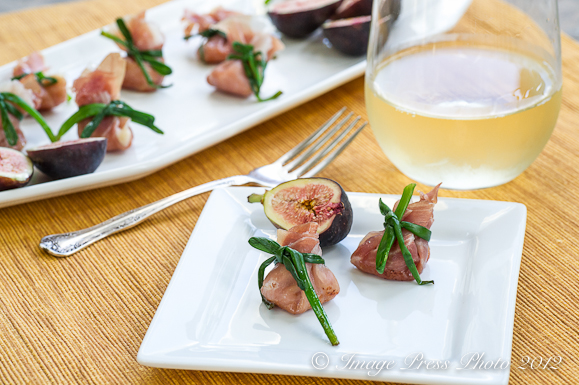
I enjoyed mine with fresh ripe figs and a glass of Friulano
Buon appetito!
This content is protected under International Copyright Laws. Bunkycooks provides this content to its readers for their personal use. No part (text or images) may be copied or reproduced, in whole or in part, without the express written permission of bunkycooks.com. All rights reserved.
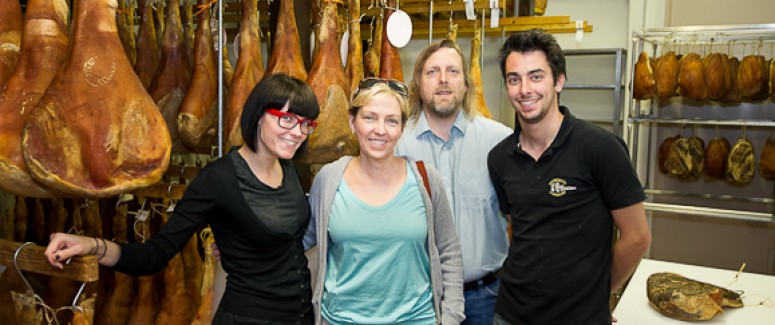
Prosciutto di Parma Purses (Fagottini di Prosciutto di Parma)
Notes on prosciutto from Lidia Bastianich: Prosciutto is a salted and air-cured ham with a wonderfully rich flavor that is meant to be enjoyed without much embellishment. Therefore, buying the best quality prosciutto is of the utmost importance.
The authentic Italian prosciutto that is available in the United States comes from two regions of Italy–there is Prosciutto di Parma, from the Emilia Romagna region which has a crown embossed on its rind and Prosciutto di San Daniele from Friuli which has a ham embossed on its rind. Look for these signs to insure authenticity. Prosciutto should have a bright rose pink color with a complex sweet and savory aroma. Get your prosciutto from a source that sells a lot of it, and buy it sliced thin and as close to the time of consumption as possible.
Ingredients:
10 slices of Prosciutto di Parma
About 1/2 cup freshly grated Grana Padano cheese
2 Tablespoons unsalted butter
20 sturdy fresh chives, each at least 5 inches long
Directions:
1. Cut the prosciutto slices crosswise in half to make pieces that measure about 4 inches square. Place 1 teaspoon grated cheese in the center of each square. Gather the edges of the prosciutto up over the cheese to form a “purse” with a rounded bottom and ruffled top, pinch the prosciutto firmly where it is gathers, and tie a chive around this “neck.”
2. In a large, preferably nonstick, skillet, melt 1 tablespoon of the butter over low heat. Add half of the purses and cook, shaking the skillet very gently occasionally, until the undersides of the purses are golden brown, 3 to 4 minutes. Transfer to a plate. Add the remaining tablespoon butter and cook the remaining purses in the same manner. Serve with fresh figs or ripe melon wedges.
Recipe courtesy of Lidia Bastianich


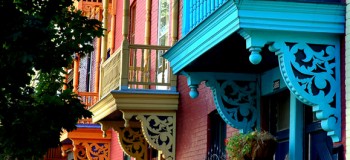













Wow, beautiful pictures!!! What an experience to remember, Gwen!! 😀
Incredible and delicious experience. It’s so nice you had the tour and were able to sample such wonderful prosciutto. You had such memorable experiences in your short stay in Friuli.:)
I am so curious now about D’Osvaldo prosciutto, particularly the stage of smoking with meat with herbs. Oh how heavenly it must have been. I will be trying this recipe, it’s so simple and elegant!
A great and interesting read! What a treat to be able to experience this.
How do I love prosciutto? Let me count the ways…umm..too may to count! I’m so used to Prosciutto di Parma, that for a second I thought ‘Prosciutto di San Daniele’? Oh, ok..that’s the region it’s cured in..their own special way. The D’Osvaldo family were so nice to invite you on that tour. If it were me..I would have brought a huge shopping cart and pulled those babies into it..one by one lol Seriously, though..what a marvelous experience..and your recipe looks terrific! So simple and lovely!
Your writing style is really great, you have a unusual voice.